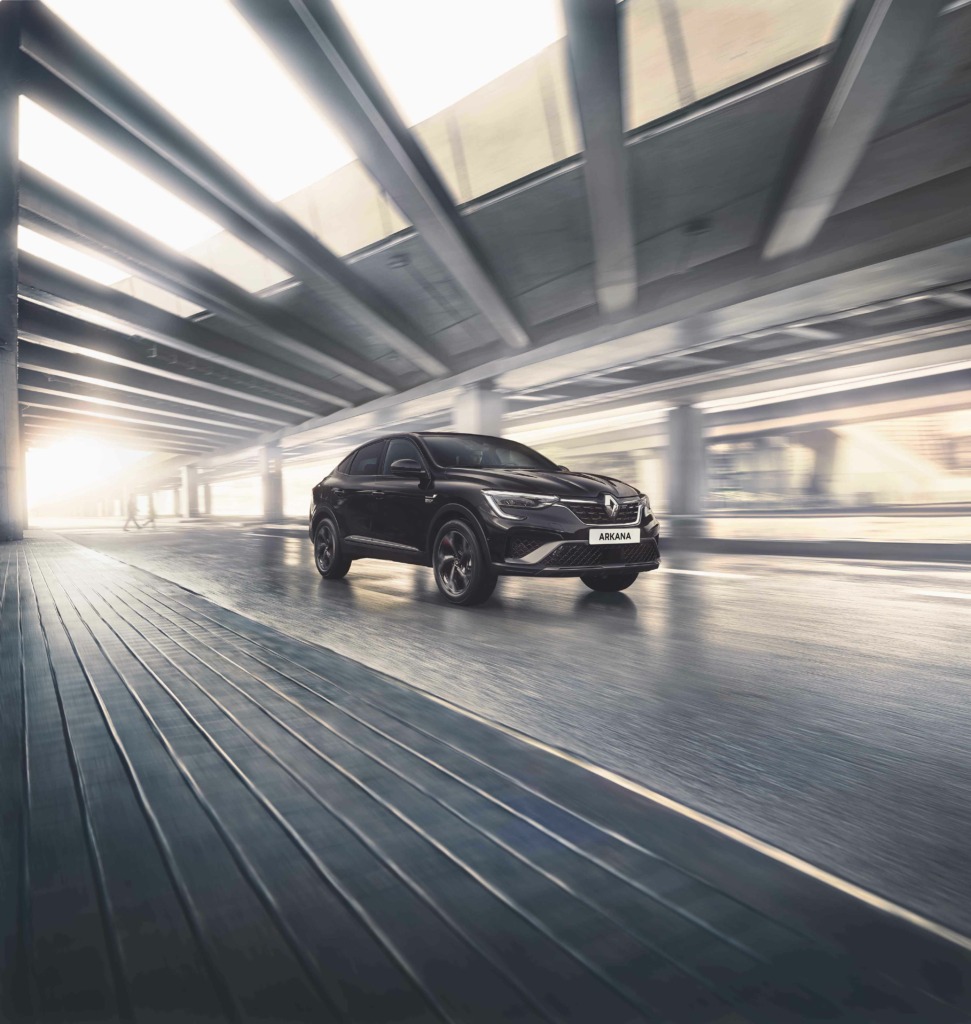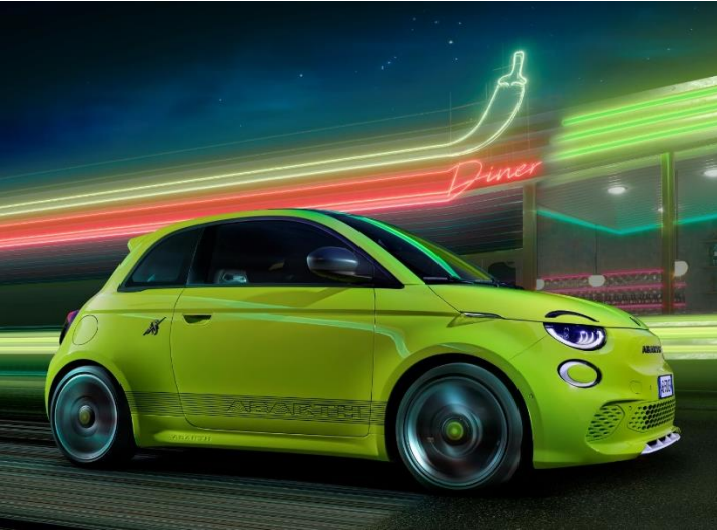The Renault Arkana strays into a market segment for mid-sized coupe-SUVs previously only occupied by the premium brands.
Background
Renault over the years has pioneered various completely new market niches – think Avantime, Twizy, Clio V6 and so on. It’s nearly always been a disaster. Where the company has usually done much better is in properly developing an existing idea – think Clio, Scenic and Captur. So the auspices are good for this car, the Arkana.
It hails from an existing but relatively undeveloped market niche, that for the mid-sized coupe-SUV – which is the sort of thing that Renault’s design department thrives on. So far, only premium European brands have launched models in this segment – think BMW X4, Audi Q5 Sportback and Mercedes GLC Coupe. The Arkana is sized somewhere between these cars and slightly smaller coupe-SUVs like BMW’s X2 and the Audi Q3 Sportback. However you pitch it, it’s the only volume brand model (and therefore the only truly affordable) entry in this segment. Skoda and Kia are both planning coupe-SUVs, but these will be of the pricey all-electric sort.
The Renault Arkana Driving Experience
Because the Arkana rides on the Renault-Nissan-Mitsubishi Alliance’s CMF-B compact car platform, which is also used for the Clio and Captur, you’d expect it to borrow engines from those models – and of course it does. Both units develop 140hp and are petrol powered – but each is very different. Things kick off with a turbocharged 1.3-litre four-cylinder 12v TCe 140 mild-hybrid petrol unit, which sends drive to the front wheels via a dual-clutch auto gearbox. It makes 62mph from rest in 9.8s en route to 127mph. And if you can afford a bit more? Well Renault had the option here to install either of its 1.6-litre E-Tech full-electrified powerplants, either the self-charging Prius-like one from the Clio or the PHEV plug-in one from the Captur. It’s opted (from launch anyway) for the Clio’s self-charging unit, which has two electric motors and a 1.2 kWh lithium-ion battery. It sends drive through a clever F1-derived clutch-less dogbox auto transmission, which Renault reckons is more efficient and smoother than a conventional automatic. 62mph from rest takes 10.8s en route to 107mph.
The auto-only powertrain format tells you most of what you need to know about the emphasis on comfort rather than drive dynamics here – but virtually all models in this segment are sold with auto transmission anyway. A nod to autonomous drive technology is delivered by the availability of Renault’s ‘Motorway and Traffic Jam Companion’ – an autonomous drive setting which can assume control of the car’s throttle, brakes and steering on the motorway.
The Renault Arkana Design and Build
So what do you think? Renault Design Chief Laurens van den Acker says the Arkana silhouette is supposed to offer ‘a balance between the elegance of a saloon and the powerful stance of an SUV’. Heard that claim before? So have we. Still, there’s certainly nothing else in the segment with a rear end quite like this one. SUV credentials are endorsed by 190mm of ground clearance, plus rugged front and rear skid plates and wheel arches. The five-door bodyshell measures 4,568mm in length and 1,571mm in height and it’s screwed together, not in France but in Renault’s factory in Busan, South Korea.
Inside, the front of cabin experience strives for a premium feel, which to some extent is superficially achieved. There’s certainly the required level of digitalisation, with a digital instrument cluster of either 4.2, 7.0 or 10.2-inches in size and a central touchscreen that can be either 7.0 or 9.3-inches, depending on trim. It’s a practical cabin too, with useful touches like large front door pockets which can accommodate 1.5-litre water bottles. Thanks to a relatively lengthy 2,720mm wheelbase, the rear seat has legroom that’s close to what you’d get in a much pricier Q5 or X4. And there’s a 513-litre boot (122-litres bigger than that of a Clio), which falls to 438-litres in the hybrid model.
The Renault Arkana Market and Model
Pricing starts at just under £27,000 and runs up to just under £33,000 and there’s a choice of four trim levels – ‘Evolution’, ‘Techno’, ‘R.S. Line’ and ‘E-Tech engineered’. There’s a £1,300 premium to go from the TCe 140 engine to the E-Tech hybrid unit. All versions get a decent standard of media connectivity, with the expected ‘Apple CarPlay’ and ‘Android Auto’ smartphone-mirroring systems, plus over-the-air infotainment screen updates and live traffic updates. Other standard features include adaptive cruise control, an active emergency braking system, lane keeping assist and a traffic sign recognition system.
Near the top of the range, as mentioned, sits the sporty ‘R.S. Line’ trim-level that Renault thinks a lot of Arkana customers will want. Variants trimmed in this way stand apart with a front splitter, red coach lines, black alloy wheels and a more aggressive rear bumper that incorporates a pair of chrome exhaust outlets. Inside, Arkana ‘R.S. Line’ models get contrasting red stitching on the seats and steering wheel, a black headliner, aluminium pedals, special red-striped seat belts and carbon-effect coverings for the dashboard and door cards. Across the range, customers can choose from various cosmetic extras, such as a contrasting black roof, three alloy wheel designs in either 17-inch or 18-inch rim sizes and seven body colours – including an ‘R.S. Line’-exclusive ‘Valencia Orange’ paint finish.
The Cost of Owning a Renault Arkana
Expect similar efficiency readings to those you’d get from Renault’s Clio supermini and Captur compact SUV models when fitted with the same engines. So when fitted with the 1.3-litre petrol 12v mild hybrid TCe 140 unit, you can expect 48.7mpg on the combined cycle and 131g/km of CO2. For the E-Tech full-hybrid 1.6-litre petrol unit, expect 57.6mpg and 111g/km of CO2.
The base 1.3-litre engine’s mild-hybrid technology is delivered through an added alternator-starter system paired with a 12V lithium-ion battery under the passenger seat. This technology improves Stop & Start and enables energy regeneration during deceleration. It also assists the engine during the highest fuel-consumption phases, when the engine starts or accelerates.
The E-TECH full-hybrid powertrain meanwhile, can provide up to 80% of city driving time with all-electric power, reducing CO2 emissions and fuel consumption by up to 40% over a combustion engine in urban driving. The Renault F1 tech used enables the vehicle to start in all-electric drive and delivers strong energy efficiency, thanks to the innovative multi-mode gearbox, a powerful energy recovery braking system and a high-level automatic battery-charging set-up. Drivers can use the Multi Sense settings to select a specific driving mode: ‘My Sense’ for daily driving, ‘Eco’ for even lower fuel consumption and ‘Sport’ to combine the power of the engine.
Summary
Not all Renault models work in terms of sales success but we think this might be one of them. Even though most people no longer want or can justify a coupe, there’s still a latent desire for a swept-back bodyshape that remains unfulfilled in the volume part of the market. Combine that with a fashionable SUV demeanour and you ought to have a winning recipe.
Of course, people who would normally stump up the extra for a premium brand mid-sized coupe SUV of this kind are unlikely to want to be fobbed off with a Renault. But if they take a look at, then a seat inside of this Arkana, we think they might be pleasantly surprised. In terms of style and technology, this French contender is certainly a match for its posh, pricier European rivals, though drive dynamics might be a different question. Still, models like this one are usually chosen for pavement presence and in that regard, for the money Renault is likely to want from you for this car, the Arkana’s case is surprisingly compelling. If you are interested in the Renault Arkana enquire now.





